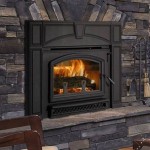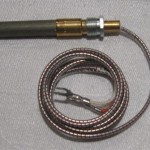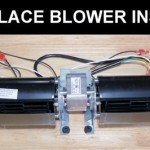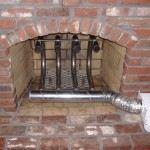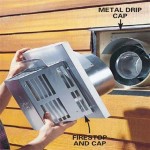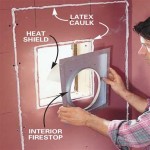How To Replace Tile Around Gas Fireplace Wallsets
Replacing tile around a gas fireplace wallset can revitalize the aesthetic of a living space and address issues such as cracked, outdated, or poorly installed tiles. This process involves careful planning, demolition, surface preparation, tile installation, and grouting. A successful tile replacement project enhances the fireplace's visual appeal and ensures a safe and durable installation.
Before embarking on this project, it is crucial to prioritize safety. Always turn off the gas supply to the fireplace at the source. This usually involves locating the gas shut-off valve, often situated near the fireplace or in an adjacent utility area. If unsure, consult a qualified gas technician to ensure the gas supply is safely disconnected. This prevents any potential gas leaks or hazards during the tile replacement process. Thoroughly inspect the gas fireplace components to identify any leaks or damages. If present, address these issues before initiating any tile replacement efforts. Following this critical safety precaution, the project can proceed with reduced risk.
Selecting the appropriate tiles is a key aspect of this process. Consider factors such as the fireplace's style, room decor, and personal preferences. Materials should be selected that are suitable for close placement with the heat source. Ensure that the tiles chosen are heat-resistant and non-combustible. Natural stone, porcelain, and ceramic tiles are commonly used options due to their durability and heat resistance. Moreover, consider the tile's thickness, size, and texture to create a visually appealing and functional design. Gathering all the necessary tools and materials before starting the project streamlines the workflow and minimizes interruptions. Essential tools include a tile saw or wet saw, a grout removal tool, a chisel, a hammer, a notched trowel, a level, a sponge, grout float, safety glasses, gloves, and dust mask. Materials to be prepared include replacement tiles, mortar, grout, sealant, and backer board (if needed).
Key Point 1: Removing Existing Tiles and Preparing the Surface
The initial step involves removing the old tiles carefully to avoid damaging the underlying structure. Begin by using a grout removal tool or a utility knife to scrape away the grout surrounding the existing tiles. This process weakens the bond between the tiles and the wall, making them easier to remove. Select the appropriate method for removal depending on the type of tiles installed. Employ gentle, controlled movements to prevent damage to the fireplace surround and wall structure. Safety glasses and a dust mask are crucial during this step to protect against flying debris and dust particles.
Once the grout is removed, use a chisel and hammer to gently tap behind the tiles, working them loose from the wall. Angle the chisel slightly inward to avoid chipping the surrounding surfaces. If the tiles are particularly stubborn, consider using a heat gun to soften the adhesive. Applying heat can make the removal process more manageable. Once the tiles are removed, thoroughly clean the surface to eliminate any residual mortar, adhesive, or debris. A scraper or putty knife can be helpful in removing stubborn residue.
Inspect the underlying surface for any damage or imperfections. Cracks, holes, or uneven areas should be addressed before proceeding with tile installation. Repair any imperfections with patching compound or mortar. Allow the repair material to dry completely according to the manufacturer's instructions. This ensures a smooth and stable base for the new tiles. In some cases, the underlying surface may require a backer board for added support and moisture resistance. Cement board is a popular choice for this purpose. Cut the backer board to the appropriate size and secure it to the wall using screws. Ensure the backer board is flush with the surrounding surfaces, providing a level plane for tile installation.
Key Point 2: Installing New Tiles
After the surface has been properly prepared, the installation of the new tiles can begin. Start by dry-fitting the tiles to determine the layout and ensure proper spacing. This step allows for adjustments and ensures a visually appealing design. Consider using tile spacers to maintain consistent grout lines. Spacers come in various sizes and can be selected based on the desired grout line width.
Prepare the mortar according to the manufacturer's instructions. Use a notched trowel to apply the mortar to the back of each tile, ensuring even coverage. The notch size on the trowel should be appropriate for the size and type of tile being installed. Press each tile firmly into place, using a slight twisting motion, to ensure good adhesion. Maintain consistent spacing between the tiles using tile spacers.
Use a level to ensure that the tiles are aligned horizontally and vertically. Adjust the tiles as needed to achieve a uniform and professional look. Periodically check the layout and alignment to prevent any issues from compounding. For tiles that require cutting to fit around the fireplace or other obstacles, use a tile saw or wet saw. Measure and mark the tiles accurately before cutting. Wear safety glasses during the cutting process to protect against debris.
Allow the mortar to dry completely according to the manufacturer's instructions before proceeding to the grouting stage. This usually takes at least 24 to 48 hours. Premature grouting can disrupt the tile placement and compromise the bond between the tiles and the substrate. Keep the area undisturbed during the drying process to ensure that the mortar properly sets.
Key Point 3: Grouting and Sealing
Once the mortar has fully cured, the next step is to apply the grout. Remove the tile spacers and clean the grout lines to ensure they are free of debris. Mix the grout according to the manufacturer's instructions. Select a grout color that complements the tiles and fireplace design. Use a grout float to apply the grout to the tile surface, pressing it firmly into the grout lines. Work diagonally across the tiles to ensure complete coverage.
Remove excess grout from the tile surface using the grout float, holding it at a 45-degree angle. Wipe the tiles with a damp sponge to remove any remaining grout residue. Rinse the sponge frequently to avoid smearing the grout. Be careful not to remove too much grout from the grout lines. Allow the grout to dry slightly before polishing the tiles with a clean, dry cloth. This removes any remaining haze and reveals the tile's natural shine.
After the grout has fully cured, apply a sealant to the grout lines to protect against moisture and stains. The sealant should be specifically designed for grout and applied according to the manufacturer's instructions. Sealing the grout helps to prolong its lifespan and maintain its appearance. Apply a bead of sealant around the perimeter of the tiled area where it meets the fireplace surround or other surfaces. This creates a watertight seal that prevents water from seeping behind the tiles. Allow the sealant to dry completely before using the fireplace.
Inspect the finished tile installation for any imperfections. Check for uneven grout lines, loose tiles, or any other issues that may require attention. Address any problems promptly to ensure a durable and aesthetically pleasing result. Clean the tiles with a mild detergent and water to remove any remaining residue. Avoid using harsh chemicals or abrasive cleaners, as these can damage the tiles or grout. A regular cleaning routine will help keep the tiles looking their best for years to come.
Replacing tile around a gas fireplace wallset is a project that requires patience, attention to detail, and adherence to safety precautions. By following these steps, homeowners can successfully update their fireplace's appearance and enhance the overall aesthetic of their living space. Remember to prioritize safety, select appropriate materials, and take the time needed for each step to ensure a professional and long-lasting result.

5 Ways To Update Your Fireplace Do It Best

5 Easy Diy Fireplace Remodel Makeover Ideas Anderson Lumber

5 Ways To Update Your Fireplace Do It Best

5 Ways To Update Your Fireplace Do It Best

5 Easy Diy Fireplace Remodel Makeover Ideas Anderson Lumber

Fireplace Remove Rebuild 20 Steps With S Instructables

Geometric Tile Stickers For Fireplace Mosaic Tiles Sticker Wall Backsplash Stikers Pack Of 9

5 Ways To Update Your Fireplace Do It Best

Chill Out Fireplace Draft Eliminator

Stylish Concrete Hearth Slab For Modern Fireplaces
Related Posts

